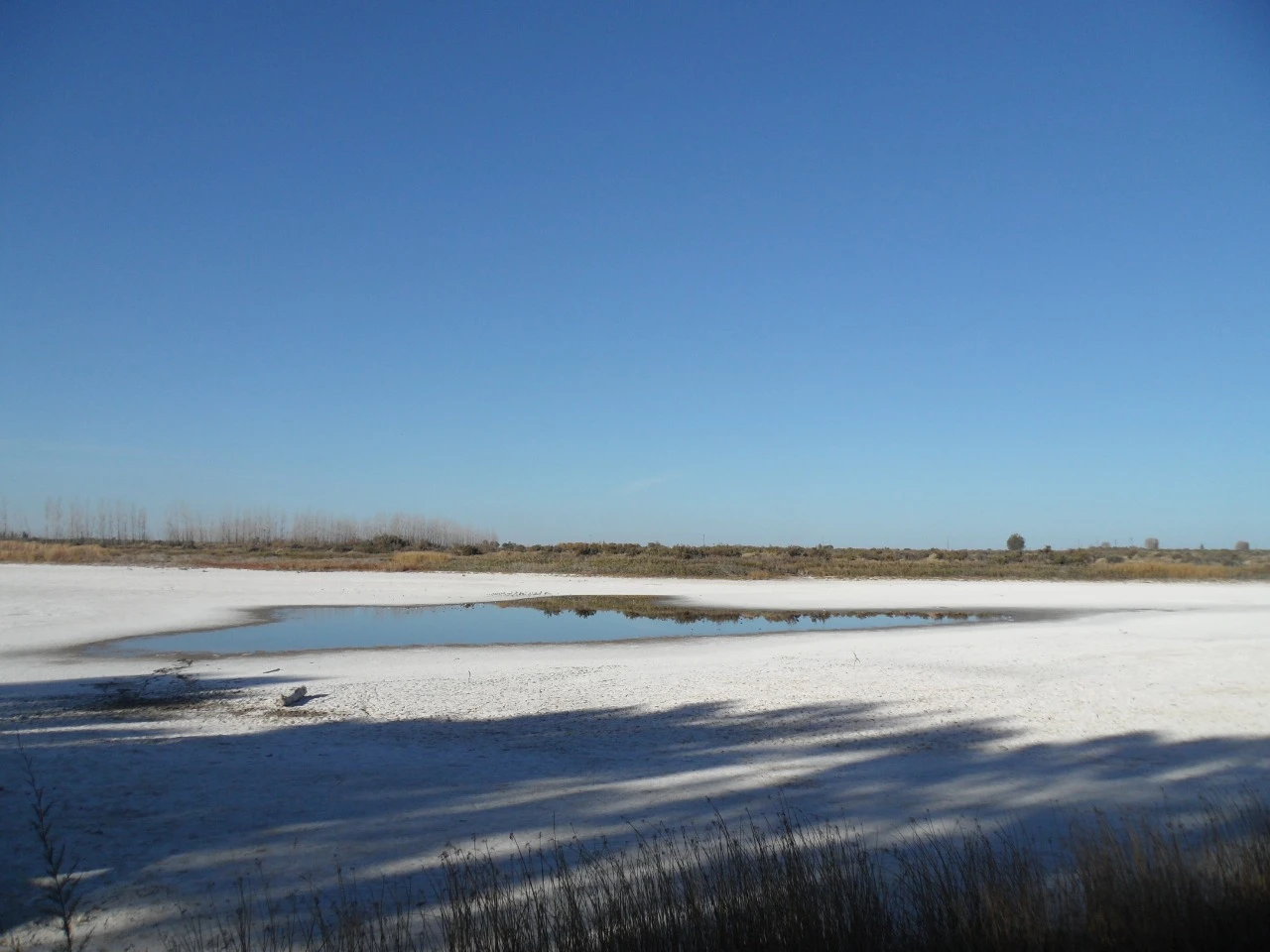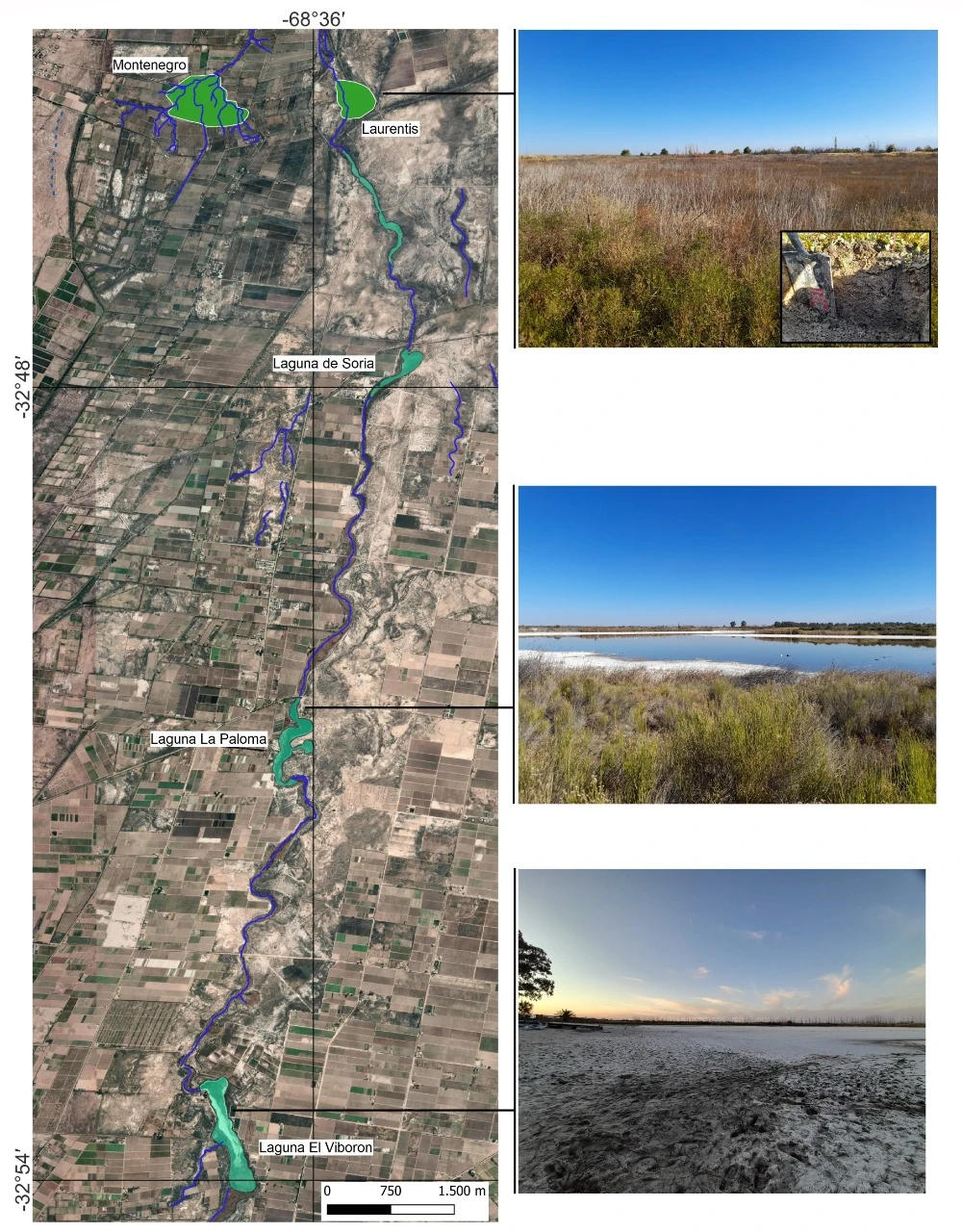Located in the province of Mendoza, in western Argentina, this wetland, which was once home to more than 130 species of birds, is on the verge of drying up completely. Although it has been declared of conservation interest by the local government, the situation is getting worse and worse. Climate change and the use of water resources are the main causes…
With the different permanent lagoons, such as Bombal, La Paloma, Los Álamos and Soria and those that form temporarily, such as the lagoon of Montenegro and Lauriente; the Viborón lagoon gives shape to what is called “the Leyes-Tulumaya system”. This is a system of wetlands which occupies three municipalities of the province of Mendoza – from north to south – at the foot of the Andes. It is important to highlight that due to its great importance, in 2020, this system has been declared of conservation interest by the Ministry of the Environment of the Province of Mendoza, with the aim of promoting its conservation through direct actions of protection and restoration. The Viborón Lagoon, on the other hand, has been declared an Area of Municipal Ecological Interest and Sustainable Use by the department of Maipuby resolution 1383/08.
The Viborón Lagoon is about 1.25 km long and has an irregular width of 300 to 30 meters in the distal part, but its extension has varied over the years. “According to the geological archives, this lagoon occupied, at the time, a much larger area than that currently measured”assures Stella Moreiras, Doctor of Geological Sciences at the CONICET (National Council for Scientific and Technical Research). She explains that this variability is associated with the flow of the Mendoza River. “During the season of heavy snowfall in the mountains, mainly associated on an interannual scale with periods of the El Niño climatic phenomenon with above-normal precipitation, these systems received a greater water supply”she says.
The El Niño phenomenon is a current corresponding to a phase warmer than usual called El Niño Southern Oscillation or ENSO (abbreviation for El Niño and Southern Oscillation) or ENOA (El Niño-Oscillation Australe in French).
According to Jennifer Ibarra, president of the Cullunche Foundationwhen the Viborón lagoon was at its peak, it represented a great tourist attraction in the region and was home to more than 130 species of birds and different species of fish. “We could observe species of birds, such as White Coscoroba (Coscoroba coscoroba), Black-necked Swans (Cygnus melancoryphus), White-faced Ibis (Plegadis chihi), Coots (Fulica), Black-necked Stilt (Cygnus melancoryphus), america (Himantopus mexicanus), the tero lapwing (Vanellus chilensis), the Ardeidae (Ardeidae), different species of ducks and even pink flamingos. There were also birds that occupied the surrounding areas, such as raptors or passerines, as well as aquatic mammals such as the nutria (a species of rodent)”assures the president of the foundation which promotes the conservation of fauna and flora, the balance of ecosystems and animal welfare in the province of Mendoza, Argentina.
The current situation of the Viborón lagoon has changed a lot… This wetland has experienced a noticeable decrease in its supply of surface water, groundwater and groundwatermainly due to the water crisis that has plagued the region since 2009. This shortage has worsened over the past year. The average flows for the year 2021 were approximately 50% lower than the average historical flows (period 1956-2020). Jennifer Ibarra assures that today the lagoon has almost no water left. “It still retains moisture in the ground, but the water mirror is no longer visible”she points out.
© Stella Moreiras – License: All rights reserved
The causes of drought…
The current situation of this wetland cannot be explained solely and solely by drought, and, according to researcher Stella Moreiras, it can be subject to multiple variables. Being an environment heavily impacted by humans, “on the one hand, there is a quarrel around the surface water mainly required for agriculture or crop irrigation. On the other hand, there is an overexploitation of the underground resource”she confirms.
Furthermore, population growth in the region is an important point to mention because there is a greater use of water, which is distributed, in this province, by the General Department of Irrigation (DGI). Jennifer Ibarra assures that this organization refuses to send to the system what is called the minimum ecological quota of water to maintain the life and health of natural environments such as wetlands. “Added to this is the diversion of water to other sectors such as irrigation and agriculture or the creation of private neighborhoods with parks and swimming pools”she adds.
Moreover, the strong decrease in precipitation in the region in recent years is one of the main causes of the reduction – and perhaps the disappearance – of this lagoon. This is due to the fact that since its origins, the Leyes-Tulumaya wetland system has found its main avenue of maintenance in the annual high mountain snowfalls. This is confirmed by Jennifer Ibarra, who points out that in recent years it has snowed less and therefore there is less water. “This Andean province depends on snowfall and as we say here, our water reservoir is in the mountains. »
…And the environmental impacts that its disappearance could cause
The consequences generated by the drought of this lagoon are enormous. There are impacts on the local environment and ecosystem because wetlands are part of the water cycle; part of the water is filtered and recycled in these environments. “This wetland regulates climate, temperature and humidity, especially in this region”says the president of the Cullunche Foundation.
On the other hand, damage to local biodiversity is irreparable. Obviously, there are no more fish and the place will no longer be a permanent or temporary habitat for countless species. Indeed, this wetland also acts as a passageway for many migratory species that move to other regions.
Moreover, as Jennifer Ibarra explains, there is negative economic consequences for the local population since the entire production chain, for example that of vegetables and fruits that are consumed in the city of Maipú, comes from this system which will be hit hard by the lack of water. The absence of tourism is a great economic loss, while the splendor of this great mirror of water unique in the region and its many recreational activities, such as sport fishing, attracted many tourists.
To summarize, wetlands have great benefits for the environment, biodiversity and human well-being, and that’s why it’s so important to keep them. They are key ecosystems for adaptation to climate change and mitigation of desertification processes; they serve as a supply of fresh water for consumption and production; they serve as habitat for animals; they provide food to the population; they help reduce the impact of storms, floods and droughts; and they are sites of significant cultural and educational interest.

© Stella Moreiras – License: All rights reserved
There is still time to save the Viborón lagoon
It is clear that action must be taken now if the recovery and conservation of the Viborón lagoon and the entire Leyes-Tulumaya wetland system are to be achieved. According to Stella Moreiras, member of CONICET, it is the municipality of Maipú, through the mayor and his council, which must act quickly to preserve the water of the lagoon. “It is necessary to take measures so as not to continue to impact this resource, from the quality of the water to the activities that result from it”, she confirms.
The Municipality of Maipú has confirmed that, with the aim of recovering part of the water from the lagoon, they are launching a tamarind eradication plan; an invasive species very present in this area that consumes a lot of water. In addition, the Ministry of the Environment of this municipality assures that it does not own the water management and that it has been facing the water crisis for more than 10 years.
For its part, the General Irrigation Department (DGI), which had already carried out hydraulic checks on the site and had analyzed both the hydrological situation of the body of water and the hydrogeological conditions of the area of influence, indicates that the water body has been affected by the general situation of the water crisis in the region. Faced with all these responses, Jennifer Ibarra says that everyone is hiding behind climate change and the region’s water stress to justify what is happening. “There is no political decision, interest or desire to save these wetlands”she says.
Regarding the future of the Viborón lagoon, Stella Moreiras is betting that the system can still recover as it has done before. However, she assures that for this to be the case, it is necessary to carry out detailed studies on the behavior of the lagoon. As for Jennifer Ibarra, she thinks that the lagoon can still be saved by diverting water to fill it and if the General Department of Irrigation respects the law of the minimum ecological quota. “There is also a need to educate, inform and sensitize officials and legislators that safeguarding wetlands is a matter of environmental and economic health”she concludes.
Text reproduction rights
All rights reserved
We want to thank the writer of this short article for this awesome web content
🇦🇷 🐸 The Viborón Lagoon, an important endangered wetland in Argentina
We have our social media pages here and other related pages herehttps://nimblespirit.com/related-pages/

